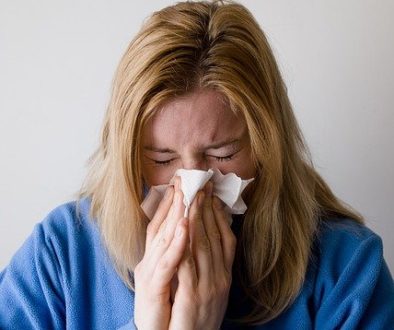Sleep Apnea
Sleep apnea is characterized by temporary breathing cessations during sleep. These breathing interruptions or pauses last on average 10 to 60 seconds and occur several times an hour. This sleep disorder affects approximately 3% of the population.
Causes
There are three types of sleep apnea. Obstructive sleep apnea is the first type and is caused by a blockage of the airway. Such blockages prevent air from readily reaching the lungs. A collapsing and closing of the soft tissue in the rear of the throat, large adenoids or a large tongue can create obstacles that prevent air from flowing into the lungs. The second type is central sleep apnea which occurs when the brain fails to signal the muscles responsible for breathing. Lastly is mixed apnea, which, as the name implies, is a combination of the two.
All three types of sleep apnea have one common element – normal breathing is always affected. This leads to a change in gas concentrations in the body whereby oxygen levels are depleted and carbon dioxide levels are increased. As a result, the heart must work harder to counter the effects brought about by these changes. This in turn leads to fragmented sleep that is non-restorative.
Persons most at risk
Certain persons are more at risk for sleep apnea than others. Individuals who are overweight represent the most at-risk group. The elderly, smokers and those who drink or take sedatives are also more prone to developing this disorder.
Symptoms
The most common symptoms are:
- Pauses in breathing during sleep lasting more than ten seconds;
- Morning fatigue and daytime drowsiness;
- Irritability and depression;
- Headaches and memory problems;
- Loud snoring and breathing at night;
- Decreased sex drive.
In certain cases, complications can arise if treatment is not administered. In fact, certain illnesses such as high blood pressure and stroke can develop as a direct result of sleep apnea.
Diagnosis
A family physician can diagnose sleep apnea based on a description of symptoms. The physician can also recommend tests to determine the cause behind the airway blockage or to establish whether the apnea has led to any complications. Then, if necessary, the physician can refer the patient to a sleep clinic specialist. A polysomnography (sleep study) will be conducted to determine the number, duration and frequency of breathing interruptions at night.
Treatement
The most widely recommended treatment for mild sleep apnea involves lifestyle changes such as:
- Losing weight: reduces airway blockage.
- Keeping to a regular sleep schedule: reduces sleep apnea related fatigue.
- Sleeping on your side: helps keep the airway open.
- Exercising: helps reach a healthy weight and improves sleep quality.
- Avoiding alcohol and sedatives: reduces snoring.
- Stopping smoking: reduces throat irritations.
The same lifestyle changes are recommended for moderate to severe apnea in addition to other measures. The most common treatment is known as continuous positive airway pressure. In other words, a constant flow of air flows through a mask, keeping the throat open and preventing the soft tissue from collapsing. This helps reduce the number of apnea episodes.
A dental splint can also be used to prevent the soft tissue at the back of the throat from creating a blockage and to prevent the tongue from falling back into the mouth. Another option is, of course, surgery. Surgery can be effective in removing redundant soft tissue. The objective behind all these methods however is essentially the same: to clear the airway in an effort to prevent breathing interruptions.
For more information or for support :
Visit: medicineshoppeonline.com
© Copyright Vigilance Santé
The patient information leaflets are provided by Vigilance Santé Inc. This content is for information purposes only and does not in any manner whatsoever replace the opinion or advice of your health care professional. Always consult a health care professional before making a decision about your medication or treatment.




